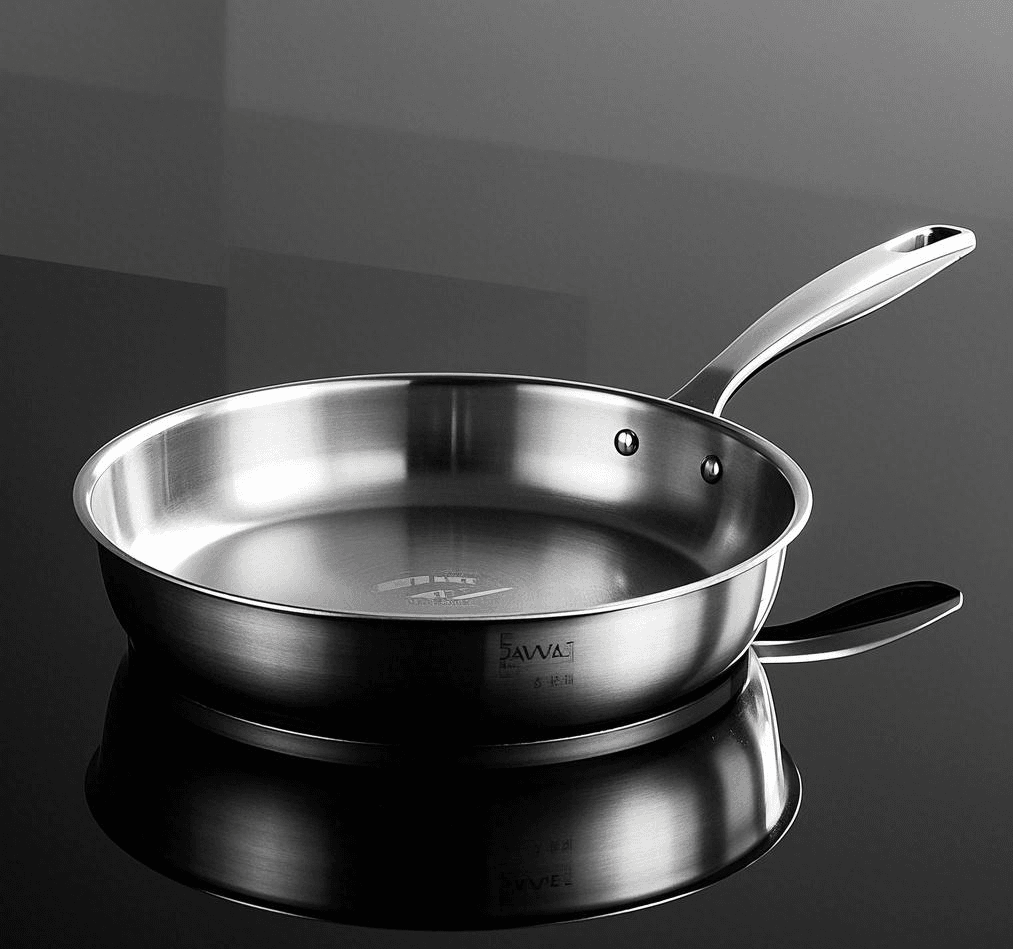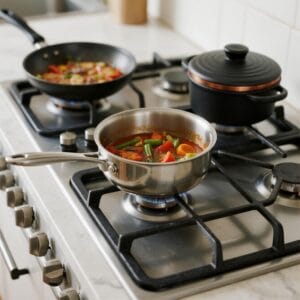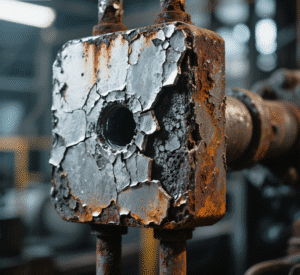Introduction: Understanding the Limits of Triply Cookware
Triply cookware, with its layered construction of stainless steel and a conductive core like aluminum or copper, is a kitchen favorite for its durability and heat distribution. However, no cookware is perfect—what are the potential drawbacks or limitations that consumers should know about? This article examines the challenges of using triply cookware to provide a balanced perspective for informed decision-making.
Potential drawbacks of triply cookware include its higher cost, weight, maintenance needs, heat-up time, and stovetop compatibility limitations.
Let’s explore these limitations to see where triply cookware might fall short.
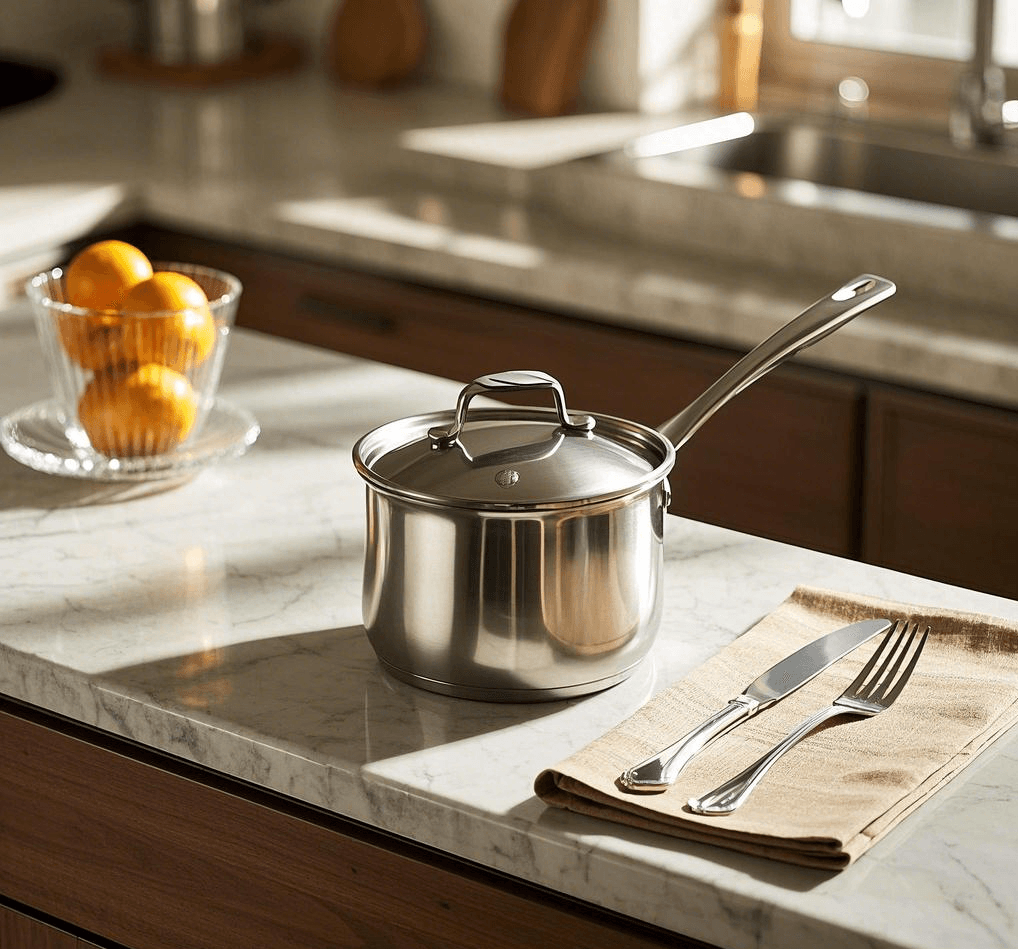
Why Is the Cost of Triply Cookware a Potential Drawback?
The price tag of triply cookware can be a significant hurdle for many consumers, reflecting its premium construction.
- Higher Price Point: The use of high-quality stainless steel and a thick core drives up costs compared to single-layer options. Brands like All-Clad often start at $100+ for a single piece.
- Budget Impact: For casual cooks or those equipping a kitchen on a budget, this expense might outweigh the benefits of durability and performance.
- Value Trade-Off: Triply Circle Titanium notes that while the investment pays off long-term, the upfront cost can deter some buyers.
The elevated cost of triply cookware may limit its accessibility for cost-conscious consumers.
How Does Weight Pose a Limitation for Triply Cookware Users?
The substantial weight of triply cookware, a byproduct of its thick layers, can be a drawback for some users.
- Heavier Build: The dense construction—essential for heat retention—makes triply pots and pans heavier than aluminum or non-stick alternatives, potentially causing fatigue during prolonged use.
- Handling Issues: Lifting or maneuvering full pans might strain wrists, especially for those with limited strength, as highlighted by the Cookware Manufacturers Association.
- Design Balance: While brands like Triply Circle Titanium aim for ergonomic balance, weight remains a challenge for some.
The heft of triply cookware can hinder ease of use, particularly for frequent handling.
What Maintenance Challenges Come with Triply Cookware?
Triply cookware demands more upkeep than some alternatives, which can be a limitation for low-maintenance seekers.
- Cleaning Effort: Stainless steel surfaces can show stains, water spots, or discoloration (e.g., from overheating), requiring regular polishing to maintain appearance. Non-stick coatings are simpler to clean.
- No Dishwasher Guarantee: While some triply pieces are dishwasher-safe, others—like those with riveted handles—may trap residue or wear faster in machines, per Consumer Reports.
- Care Tips: Triply Circle Titanium advises hand-washing and avoiding abrasive scrubbers, adding to upkeep time.
Triply cookware’s maintenance needs can be a drawback for those preferring low-effort care.
How Does Heat-Up Time Affect Triply Cookware Performance?
The heat-up time of triply cookware, while tied to its strengths, can also be a limitation in certain scenarios.
- Slower Warm-Up: The thick layers take longer to heat initially compared to thin aluminum or cast iron, delaying quick tasks like boiling water or searing on a tight schedule.
- Energy Use: This slower response might require more energy upfront, offsetting some efficiency gains during cooking.
- Trade-Off: While heat retention excels, the warm-up phase tests patience for fast cooks.
Longer heat-up times in triply cookware may frustrate users needing rapid cooking starts.
What Stovetop Compatibility Issues Limit Triply Cookware?
While versatile, triply cookware isn’t universally compatible with all stovetops, posing a potential drawback.
- Induction Dependency: Not all triply cookware is induction-ready—only those with a magnetic stainless steel base work, excluding some models from use on this growing stovetop type.
- Size Mismatch: Oversized bases on small burners (e.g., electric coils) lead to uneven heating, reducing efficiency, as noted by Demeyere.
- Verification Need: Consumers must check compatibility specs, adding a step that simpler cookware types avoids.
Stovetop compatibility quirks can restrict triply cookware’s usability for some kitchens.
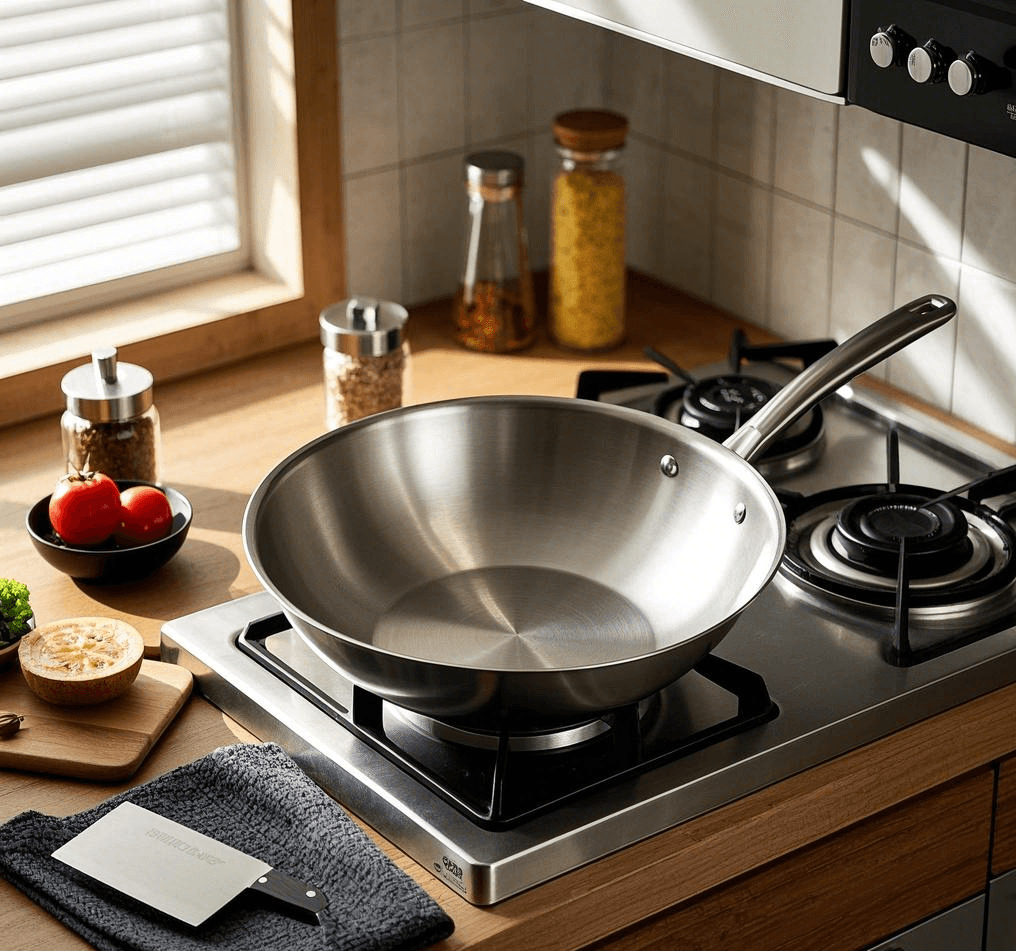
Claim: Triply Cookware’s Limitations Are Real but Manageable
The drawbacks of triply cookware—cost, weight, maintenance, heat-up time, and compatibility—present challenges, but they stem from its high-quality design. Understanding these trade-offs helps consumers weigh its value against their needs.
Conclusion: Balancing Triply Cookware’s Pros and Cons
From my perspective, triply cookware’s limitations, like those outlined for brands such as Triply Circle Titanium, don’t overshadow its benefits but do require consideration as of March 03, 2025. If you’re willing to invest time and money for superior performance, these drawbacks are manageable. For others, lighter, cheaper options might suffice—knowing the limits ensures you pick cookware that fits your lifestyle.

